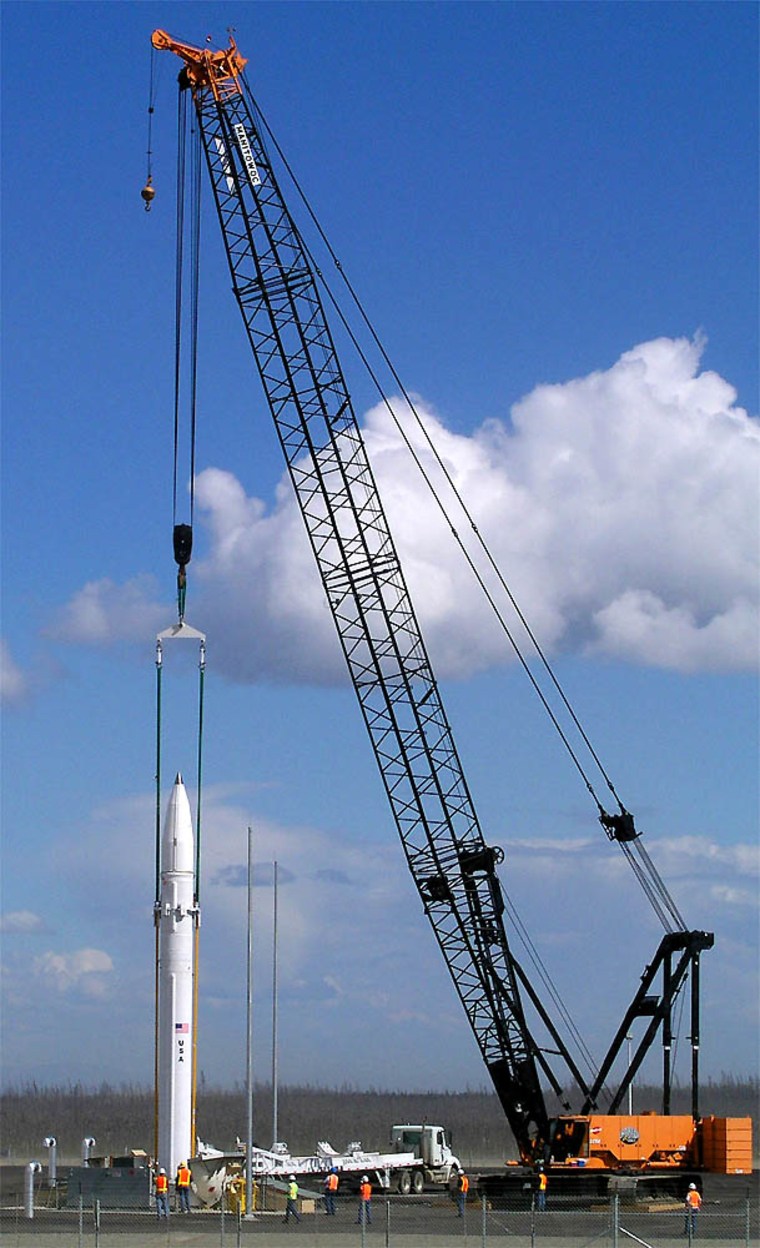A ground-based missile interceptor was installed Thursday in Alaska’s Interior — the first component of a national defense system designed to shoot down enemy missiles.
Crews at Fort Greely lowered the 55-foot-long (16.8-meter-long), three-stage interceptor into one of six silos built behind a double perimeter fence reinforced by heavy barbed wire.
“We’re coming to the end of an era where we have not been able to defend our country against long-range ballistic missile attacks,” said Major Gen. John Holly, who heads the ground-based missile defense program for the Pentagon’s Missile Defense Agency.
Five additional interceptors will be installed at the 700-acre complex — another four at Vandenberg Air Force Base in California — by the end of the year. Ten more will be installed at Fort Greely by late 2005, launching the Bush administration’s multibillion-dollar system.
What interceptors do
Missile defense is an essential part of President Bush’s national security policy. It hasn’t been as politically divisive as President Reagan’s more elaborate “Star Wars” program, but Democrats complain the administration is spending billions of dollars to deploy interceptors without conducting adequate tests to see if they will even work.
According to Missile Defense Agency officials, the interceptors will be linked to a vast network of satellites, radars, computers and command centers. In an attack, satellites would alert the U.S. Northern Command in Colorado, triggering a response by interceptors topped with optical sensors while a complex radar system would track incoming enemy missiles.
As illustrated by a video simulation produced by the agency, the interceptor would zero in on the warhead more than 100 miles (160 kilometers) over the Pacific Ocean, destroying it at speeds faster than 15,000 mph (24,000 kilometers per hour).
Critics disagree.
The interceptors have not proven their reliability, hitting targets only five times in eight tests, said Philip Coyle, former assistant secretary of operational test and evaluation at the Pentagon. He said they failed even when using advanced information “an enemy would never give us,” including when they were launched.
“It’s not something you want to depend on in real battle,” said Coyle, now a senior adviser at the Center for Defense Information, a Washington think tank. “It’s also misleading to say we don’t have any defense now. If troops in North Korea saw that country building a missile, they would blow it up on the ground. They would never wait to see if it was launched.”
Trillion-dollar system?
Congress has appropriated more than $10 billion for the missile defense system for the next fiscal year, and Missile Defense Agency estimates for 2004-2009 run as high as $53 billion.
A group of independent economists estimates the entire system could cost as much as $1.2 trillion, based on government estimates of individual components — many of which have yet to be developed or tested, Coyle said.
“It’s like building a house without a floor plan,” he said.
Defense agency officials said the interceptor has proven increasingly reliable, passing four of the last five tests. More testing is expected this summer with target launches from Alaska’s rocket range in Kodiak.
“The interceptor being installed today has undergone rigorous tests and checkout activities,” Holly said.
Sen. Wayne Allard, R-Colo., a member of the Senate Armed Services Committee, said the system is better than none. “The fact is, we’re vulnerable,” he said. “It’s not intended to be all the answer. Nobody’s selling it like that.”
